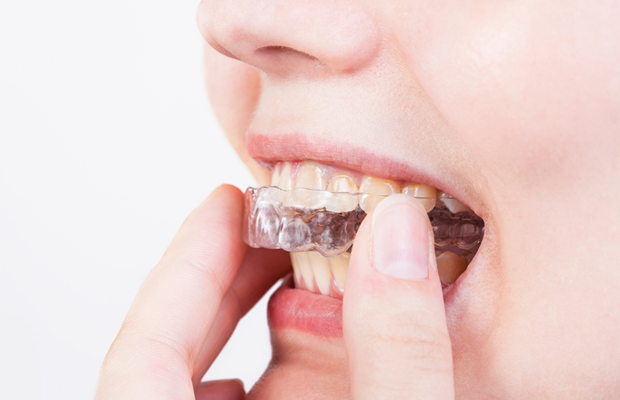
Previously orthodontic treatment was carried out on children in their teenage years. Today, however, many children start orthodontic treatment at a much younger age. There are also large numbers of adults receiving orthodontic treatment.
At what age do you consider braces?
Traditional “train-track” braces are fitted to a child’s adult teeth and are used to move, realign and/or rotate a tooth or teeth into the correct position. This is why you'll usually see children 10 years and older wearing these types of braces.
However, crowded/crooked/skew adult teeth usually manifest because of a space shortage and/or a problem with jaw growth and/or jaw relationships. This can usually be identified in young children, even before many of their adult teeth start coming through.
The big shift in orthodontics has been to check children at a much younger age, identify these issues earlier and intervene before the arrival of the adult teeth.
In many cases, early intervention can provide future adult teeth with all the space they need and the child may not have to wear conventional braces at all.
Plates vs. braces
Sometimes using adjustable, removable plates can be successful, especially in young children where they can help the jaw grow to the right size and shape, which creates the space required for the new adult teeth before they come through.
Other times plates may be used first, followed by braces.
In adults, there are many situations where more simple alignment issues can be corrected using a series of custom-made clear aligners (as can be seen in the image below).

The fundamental thing in orthodontics is that each case is unique. Each child’s case needs to be assessed properly and a tailor-made treatment plan created for the individual to ensure the best results.
One of the disadvantages of using removable plates for children is that they are removable.
Children often don’t wear their plates as directed, the plates get lost and/or broken and many months of treatment (and a lot of money) can be wasted when a child does not follow instructions.
Tooth and bite conditions to watch out for
We have two jaws, the upper jaw (maxilla), which is part of our skull and cannot move and the movable lower jaw (mandible), which is a long, curved bone with joints on each end.
The lower jaw moves when we speak, chew and swallow. The joints on each end pivot and slide in special sockets at the base of our skull, just in front of our ear openings.
In an ideal orthodontic situation, all our teeth should line up in each jaw – the teeth of the lower jaw should fit nicely inside those of the upper jaw when we bite together.
If we have what is called an overbite (Bugs Bunny), it could be because the upper jaw is too far forward and/or too big, or because the lower jaw is too far back and/or too small. Or both.
Similarly, an underbite (bulldog) occurs when the upper jaw is too far back and/or too small or the lower jaw is too far forward and/or too big, or both.
If the teeth are crowded in the lower jaw, it could either be because the lower jaw is too small for all those teeth or because the upper jaw is too small and the lower teeth cannot fit inside upper jaw arch, as they are supposed to.
In many such cases, the teeth in the upper jaw are forced forward by the trapped lower jaw, which can cause the front teeth to protrude outwards.
In teenagers and adults, tooth clenching and/or grinding, migraine headaches, chronic earache and chronic neck, back and shoulder pain can also be associated with a lower jaw which is trapped inside the upper jaw.
Treat case by case
Each child is unique. And so will their orthodontic development and possible treatment.
In many dentists' and orthodontists' opinion, the most important development in orthodontics has been the advent of early-intervention orthodontics, where jaw growth and facial development form the new basis of orthodontic planning, instead of trying to straighten crooked adult teeth with braces.
Image credits: iStock




 Publications
Publications
 Partners
Partners











